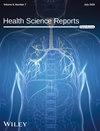Evaluation of the Relationship Between Water Hardness and Incidence of Cardiovascular Diseases in Mashhad, Iran During 2018–2020: A Cross-Sectional Study
Abstract
Background and Aims
It is believed that the presence of calcium, which is the cause of water hardness, has an inverse relationship with the occurrence of CVDs. However, the results of studies in this field are unclear due to high heterogeneity. Thus, the purpose of this study was to evaluate this hypothesis among members of the Mashhad Persian cohort in Mashhad, Iran.
Methods
A total of 618 individuals, aged 25 to 65, who were healthy or had cardiovascular diseases, were chosen. The participants' biological samples were obtained in the first stage, and measurements of their height, weight, waist, hips, and wrist circumference were made in the second stage. The final step involved having the individuals fill out questions about their health and diet. Additionally, logistic regression models, the t-test, and the χ2 test were employed for data statistical analysis.
Results
The amount of calcium carbonate in the water consumed by the non-cardiac and cardiac subjects was 159.40 ± 38.63 and 158.05 ± 38.63, respectively, which was not statistically significant (p = 0.683). Taking into consideration that water containing calcium carbonate in concentrations 120–180 mg/L is generally considered hard; the two groups drank hard water. Furthermore, the results of the logistic regression model test demonstrated that there is still no significant correlation between the prevalence of CVD and the levels of calcium carbonate (p = 0.651) and total hardness (p = 0.660) in drinking water, even after accounting for other CVD risk factors.
Conclusion
Consistent with prior studies, our article's findings demonstrated that there is no discernible correlation between the use of hard water consumption and the development of CVDs. However, several publications have also noted a significant correlation, mainly attributing it to the existence of magnesium ions. Therefore, further research can help give a definitive answer to this hypothesis.


 求助内容:
求助内容: 应助结果提醒方式:
应助结果提醒方式:


